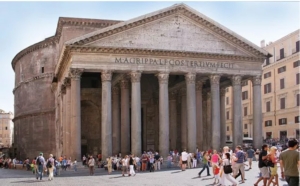Ancient Technology: Mystery Ingredient Helped Roman Architectural Gems to Weather Time, Study Shows
Majestic Roman structures, from the Pantheon to the iconic Colosseum, unfailingly capture our imagination, whether we behold them “in the flesh” or they gaze at us from picture postcards. But how often do we stop to ponder the engineering ingenuity behind their creation? There is a mysterious "ingredient" that explains why Roman buildings have survived so long, a new study claims. The intriguing durability of ancient Roman concrete, which has survived millennia, is what a team of scientists from the United States, Italy, and Switzerland decided to probe, publishing their findings in the journal Science Advances. It has been thousands of years, yet traces of the Roman Empire have survived to our day and age, inspiring generations that followed. Ancient Romans built to last, whether it was temples, houses, or aqueducts. Lasting reminders of the once flamboyant Roman Empire, awe-inspiring architectural marvels such as the famous amphitheater, the Colosseum, the well-preserved Pantheon, and the architectural gem of Maison Carrée temple in Nimes.



